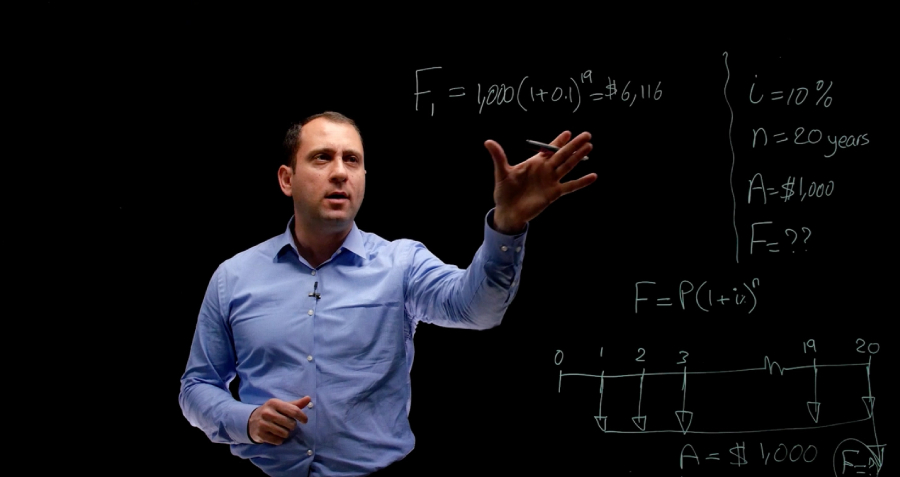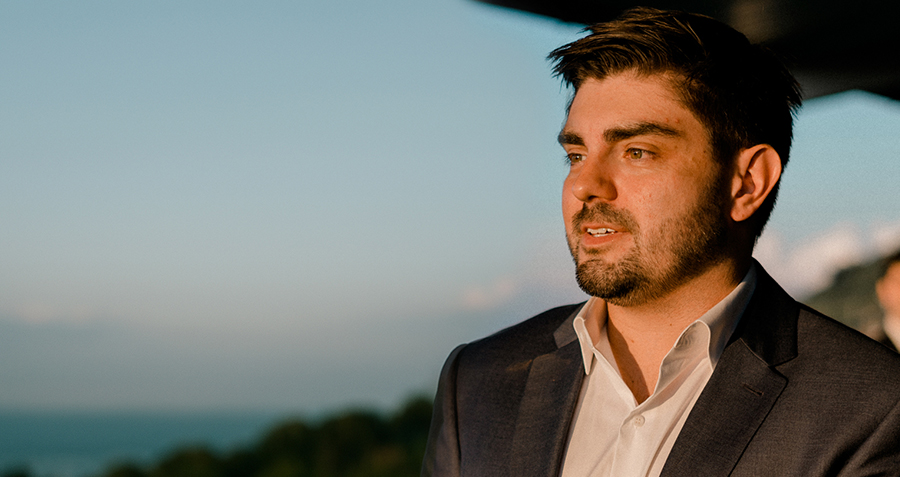Innovation expert Scott Anthony talks about the challenges of the ‘first mile’ where an innovation moves from an idea to reality.
Strategists at start-ups and other new ventures often focus on the challenges of product delivery—the so-called ‘last mile’—but innovation consultant Scott D. Anthony says that ideas often go wrong in the very beginning. His sixth book, The First Mile: A Launch Manual for Getting Great Ideas into the Market, focuses on how to avoid the most common mistakes that keep innovative business ideas from succeeding.
Anthony, who has authored among other books Seeing What’s Next with Clayton Christensen and Erik A. Roth, is the Managing Partner of Innosight, a consultancy focused on strategy and innovation, and Innosight Ventures, the company’s strategic investment unit. Based in Singapore since 2010, Anthony has been advising companies on innovation for more than a decade.
Q. Where did you get the idea for The First Mile?
A. I was at an event in early 2010 in Amsterdam, and I had been thinking about the common challenges I observed across big companies we were consulting to and the start-up businesses we were supporting. Right before I was going to get up and present, instead of sharing my prepared remarks, I decided to describe to this of room innovators inside companies what would cause them to fail and get fired. Talking about it on the fly then led me to say, ‘Huh, maybe there’s something that I can write about here’, and on the plane home, I drafted what ultimately became one of the chapters in the book.
Q. Why is the first mile so dangerous?
A. Every idea is imperfect, that is, every idea is partially right and partially wrong. The trouble is you don’t know which part is which, and because of that, you can end up heading off in the wrong direction.
The fundamental challenge you have in the first mile of innovation—that moment where you move an idea from paper to reality—is that a high degree of strategic uncertainty makes it easy to move in the wrong direction. How do you address that challenge? The approach in the book borrows liberally from the scientific method. Just like scientists run structured experiments to test hypotheses, strategists should carefully experiment to test uncertainties about customer behavior, competitive response, and more.
Q. Since you’ve been looking at this process and trying to nail it down, have you seen any difference in the success rate of your clients’ products and your venture investments?
A. On the clients’ side, the places where we’ve deployed the tools with a degree of rigor all report making quicker decisions and faster progress on their ideas. Sometimes that’s a faster decision to kill an idea, and getting to that decision point more quickly is really critical inside a large company.
The nine venture capital investments that we’ve made since we’ve really firmed up this line of thinking have done well collectively. Two of them have had positive liquidity events. We’ve got a couple more that look to have similarly positive liquidity events this summer. While the sample is still small, the numbers look quite good for a seed-stage venture capital firm in Singapore. We’ve hit the ball solidly almost every time it’s been thrown to us, which is great, and we’re hopeful that we’ll still find that one that will produce the 100X return that makes everybody lots of money.
Q. So maybe your process is good for base hits but not home runs?
A. I think if you’re dealing with something that’s got the potential to be highly disruptive, to be a so-called moonshot, there’s no less reason to believe that the discipline around strategic experimentation is important. There’s nothing in any of this that constrains your thinking or forces you into too narrow a market opportunity, or causes you to take a big idea and make it small. I think the truth is that there just aren’t that many moonshots to be launched or unicorns to be found or home runs to be hit.
One of the tricks in all of this is that you’ve got to be able to flip between three very different mindsets. First, the moonshot mindset: this is how we’re going to take over the world, this is the really radical thing that we’re trying to do, let’s paint that picture. Second, in the next 12 or 18 months, this is how we’re going to create the opportunity. And third, Tuesday at 3:05 p.m., this is exactly what I’m going to do—because as they say, strategy without tactics is hallucination. Flipping between those three mindsets is not easy, and in fact, in many start-ups you’ll have different people who each take one.
Q. A lot of your points seem fairly intuitive, such as documenting your idea. Why don’t people do these things already?
A. Everybody’s got some things documented to a degree, but really thinking with discipline and rigor about what you’re trying to do, what the business model is, and what it will mean to all the different stakeholders involved, that’s pretty rare. I see people miss components of the document stage all the time.
Experienced pilots all follow checklists. Even though they’ve flown planes hundreds of times, they go through their checklist. It may be routine to them, but it’s still complicated, and they want to make sure they don’t unintentionally forget something really important.
That’s what a lot of this is—just making sure you haven’t unintentionally skipped a step.
The lists are also important because it’s almost always impossible to fully anticipate where the breakthrough will be beforehand. This approach helps make learning as active as possible. Sometimes, you’re just chugging through things—think of Edison and the incandescent light bulb and the thousand experiments he had to do before he found the right material for the filament. And sometimes, it really is the thing you did not expect at all. It’s Alexander Fleming leaving his lab dirty and discovering penicillin, which was almost but not quite a pure accident. This approach helps you make sure you are actively learning and your eyes are wide open. You’re not just looking for what you expect, you’re looking out for the unexpected.
Q. You write in your book that companies often have to make radical changes to their business model as they innovate. Your company, Innosight, for instance, began as a newsletter company but then became a consulting company and venture capital firm instead. How do you build a culture for your organization if what you’re doing changes so radically?
A. The thing that allowed us to hang together as we went through what looked like jarring changes is we collectively believed we were working on a problem worth solving—bringing greater rigor to the fuzzy challenges of innovation. Finding an economic model to do that profitably was a very open question, but we knew that the problem was a good problem. Whether you solve it through newsletters or conferences, or workshops or consulting—those are different delivery models, but you’re solving the same problem. I think where you run into trouble is when you say, ‘Okay, well, we thought we were going to do something related to innovation but actually it turns out that we’re going to go and do something related to operational effectiveness or something completely disconnected from our actual mission.’
Q. But you point out that even as you make these changes, you never know for sure that you’re right. You say in your book that as a rule of thumb, if you think a plan has a 70% chance of success, you should go ahead. What’s special about 70%?
A. Sometimes it gets called the Colin Powell rule, sometimes it’s the Marines’ 70% rule, but the idea is you never have 100% of the data until it’s too late to do anything with it. Do you know for certain the enemy’s going to attack? Well, by the time you’re 100% certain, they’re already behind the walls, and there’s not much you can do about it. Seventy percent, you’ve still got some doubts, but you’re trusting your accumulated experience.
Q. Are there are any aspects of the First Mile approach that you think would be useful for personal decisions?
A. I think any time you are confronting uncertainty, such as deciding what your next career move will be, pieces of this toolkit can be extremely helpful. The two specific things that I always think about are number one, whenever you don’t know what to do, can you turn it into a test, can you run a conscious experiment to go after one of the key assumptions you have? And two, how can you use the discipline of imagining if you are going to succeed? What will you have had to have done to make that success happen, and then, what are you going to start doing tomorrow? Because the mistake we often make in life is we just haven’t done enough to imagine all the different things that have to happen in order to pull something off. Asking, ‘What are all the things I need to succeed?’ can really help you confront uncertain decisions with more confidence.
The last thing I’d say is, always remember that there are no guarantees in life and sometimes you do have to kind of close your eyes and trust. It doesn’t always work out exactly as you intended but you’ll definitely learn something interesting from the journey.




















